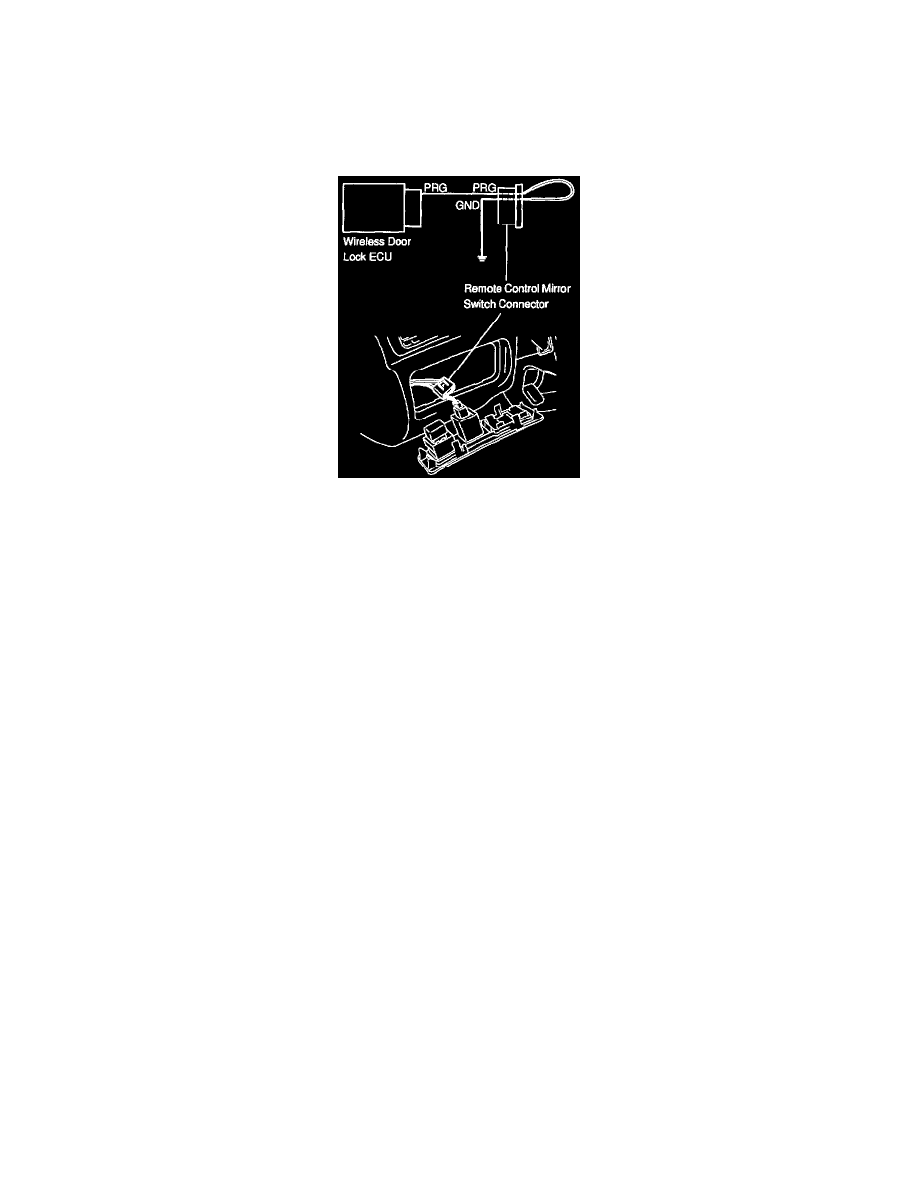Camry CE Sedan 4-Door L4-2164cc 2.2L DOHC MFI (1997)

Keyless Entry Electronic Control Unit (ECU): Programming and Relearning
REGISTRATION OF RECOGNITION CODE
The recognition code of the transmitter is electronically registered (written to and stored) in an EEPROM contained in the wireless door lock ECU.
This makes it possible to register up to 2 different codes in the EEPROM. New recognition codes can be registered after all previous codes have
been erased. A transmitter code can be registered into the EEPROM by following the steps numbered (a) to (e).
(a) The wireless door lock ECU and remote control mirror switch are connected to each other via a PRG terminal, and the GND terminal of the
remote control mirror switch connector is grounded to body. Remove the connector from the remote control mirror switch, which is attached under
the wireless door lock ECU, and use a test lead to short the PRG and GND connector together. As a result, the PRG terminal of the wireless door
lock ECU will be grounded to body and will cause all transmitter recognition codes previously registered in the EEPROM to be erased. At the
same time, the ECU will respond by operating once the lock and unlock functions of a the doors, and the open function.
(b) A transmitter recognition code is registered by pressing any single button of the transmitter to be registered. Once the code is registered, the ECU
responds again by operating once the lock and unlock functions of all the doors.
(c) To register the recognition code of an additional transmitter, follow the procedure shown in (b).
(d) After completing the registration of the codes, remove the test lead from the remote control mirror switch connector terminals to allow the
system to revert to the normal operation.
(e) Using the registered transmitters, verify that the system operates properly.
